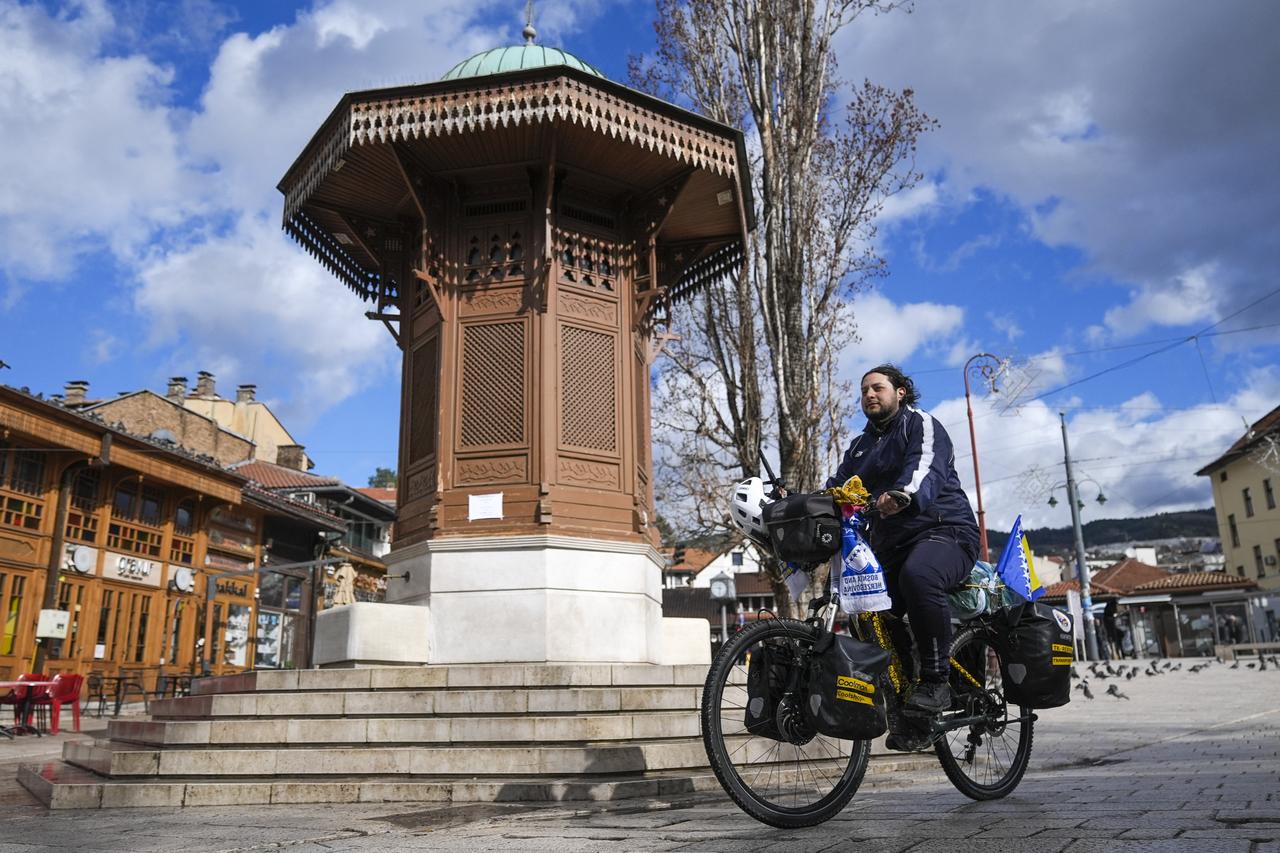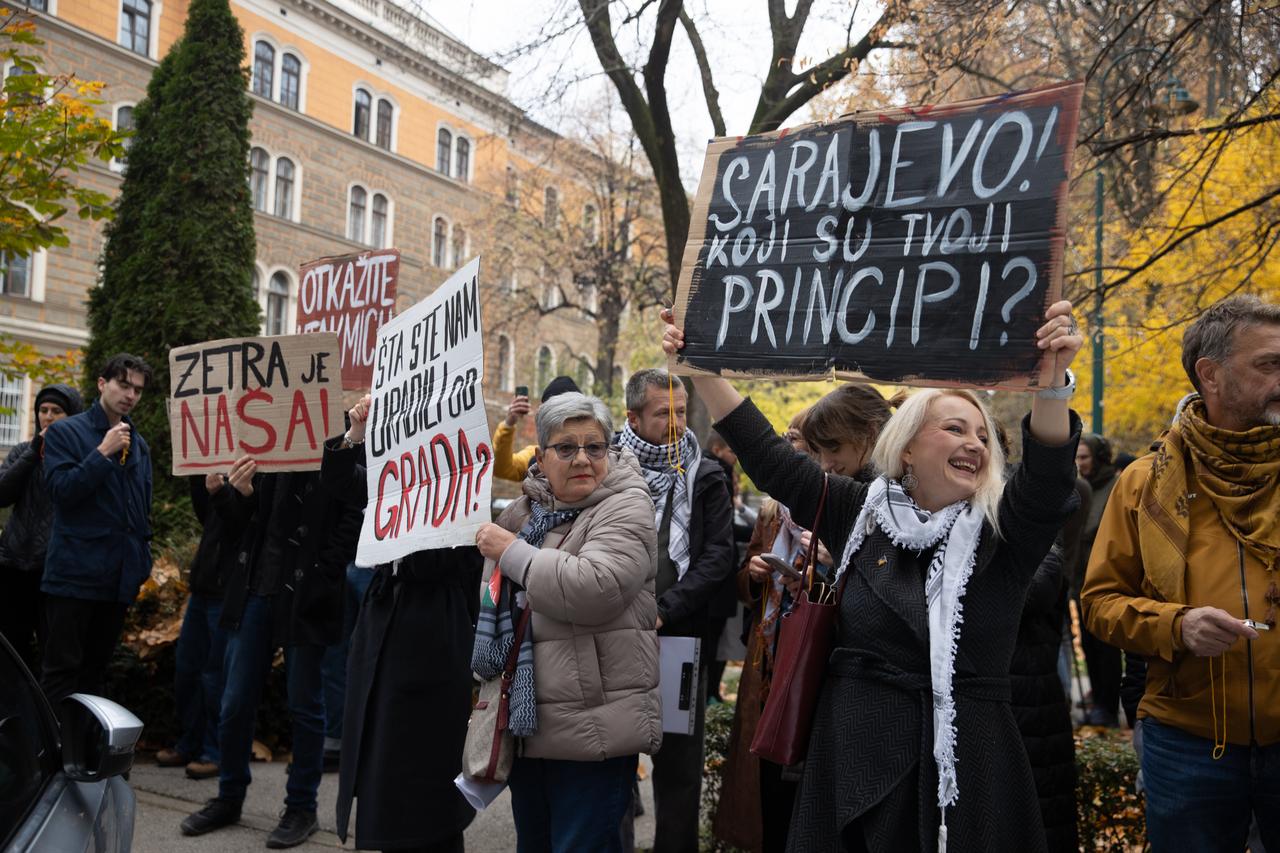
I spent the weekend back in Sarajevo, walking hand in hand with my 2.5-year-old daughter through the cobbled streets of the Old Town, past the pigeons that swirl around the wooden fountain known as the Sebilj in Bascarsija. The Sebilj was first built in 1753 by Mehmed Pasha Kukavica, a Bosnian-Ottoman governor who left behind numerous charitable endowments across Bosnia and Herzegovina.
His intention was rooted in the sebil tradition, a public fountain offering free water to travelers, a gesture of generosity and civic duty in Ottoman-era cities. The current fountain, designed by Czech architect Alexander Wittek in 1891 after a devastating fire, still stands as one of Sarajevo’s most recognisable landmarks. And according to local legend, anyone who drinks its water will one day return to Sarajevo.
As I sat beside it, sipping coffee at a small cafe while my daughter chased birds, I felt the full weight of memory. I was born here, left once to escape the horrors of war, and then again 10 years ago for work abroad. When I used to live here, I rarely stopped at the Sebilj. But now, each time I return, I make it my ritual: a morning coffee, a handful of corn for the pigeons, and a call to my mother to join us, three generations circling back to the same fountain.
The city has changed, with more tourists from all around the world, more life, more movement, yet also more uncertainty for locals.
At the cafe, I asked the barista, a young Indonesian man who’s been working there for eight months, “Why did you choose Bosnia?”
He smiled. “Because of the positivity of people. That’s what I enjoy the most. Everyone is so happy here.”
It struck me how meaningful that simple sentence was, because in recent months, we Bosnians have not had many reasons for positivity.

Dark abstractions of politics and geopolitics have once again washed over Bosnia’s fragile horizon. It sometimes feels like we want to leave our bloody past behind, but the three constituent groups: Bosnian Serbs, Bosnian Croats, and Bosniaks (Muslims)—cannot even agree on history and facts three decades later.
Young generations are learning different narratives in schools, paving the way for more divisions in the future. Genocide denialism and hate speech are on the rise, and nationalistic symbols are present across the country.
In February this year, the leader of the Bosnian Serbs, Milorad Dodik, was convicted by Bosnia’s state court for defying the decisions of the international peace envoy, a ruling that carried a one-year jail term and a six-year ban from politics. Soon after, Dodik triggered another constitutional crisis by pushing through laws in Republika Srpska to block state institutions from operating in the entity.
Then, in a move that many Bosnians found incomprehensible, the United States lifted sanctions on Dodik and his close circle, despite years of separatist rhetoric and open defiance of Bosnia’s sovereignty. Meanwhile, the European Union continues to repeat that Bosnia “belongs in Europe,” even as its own reports indirectly label the country “dysfunctional,” warning of Russian influence spreading through the Western Balkans.

All this unfolds against a backdrop of domestic tragedies: the loss of 11 elderly people in a single care-home fire in Tuzla; police officers investigated for the sexual abuse of minors; and the continuing exodus of young people seeking dignity and opportunity elsewhere.
And now, even its multiculturalism has come under attack, with an orchestrated campaign by Israel to portray Sarajevo as an antisemitic city.
When the European League match between Hapoel Tel Aviv and Dubai Basketball Team was relocated to Sarajevo, it wasn’t just a venue shift–it became a symbol. Investor Amir Gross Kabiri called Sarajevo “the leading antisemitic city in this part of the world” and said that the city had become “the most dangerous place in Europe for an Israeli team.” His words cut through the usual diplomatic language and exposed the stubborn intersection of sport, politics, and identity in the Balkans.
For centuries, Sarajevo was home to one of Europe’s most vibrant Sephardic Jewish communities, welcomed after their expulsion from Spain in 1492. Jews, Muslims, Orthodox Christians and Catholics lived, traded, and built side by side, leaving behind a legacy of coexistence that became Sarajevo’s defining strength.
Hope, once Bosnia’s most stubborn resource, is thinning out.
This weekend reminded me that even in times like these, Sarajevo still breathes. The city is teeming with visitors this year. Foreigner after foreigner tells you the same thing: “This is one of the most beautiful cities in Europe.”
They marvel at its layers: Ottoman courtyards, Austro-Hungarian buildings, and Jewish synagogues, the echoes of four faiths, the hum of coexistence that still, somehow, survives.
And tourism is only a fragment of what Bosnia holds. Our mountains, rivers, slopes and valleys carry unrealized potential—not only for visitors, but for those of us who still dare to dream of a country that works.
Bosnia deserves better: better leadership, better allies, and better faith from those who claim to stand for democracy. We are not Europe’s forgotten experiment. We are its unfinished promise, a bridge between East and West that deserves to be walked, not feared. Our people have the talent, resilience, and depth to contribute, if only given the space, the trust, and the respect to do so.
So, as I sat in that chair beside the Sebilj, and the barista’s gentle smile greeted another customer, I thought: here is what Bosnia still offers—talent, knowledge, openness, an example of coexistence.
To those in Brussels, Washington and beyond: look at us not as a problem to manage, but as a partner to trust. Remember what Sarajevo once symbolized—coexistence, creativity, defiance. Don’t leave us in the waiting room of “maybe someday.” Engage with us now.
And to my fellow Bosnians, at home and abroad, I say this: we still have this land, this fountain, this pulse of a city that refuses to give up.